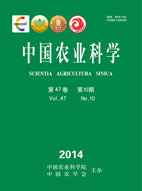-
Effects of Different Winter Planting-Green Manure on the Grain Yield of Rice and Weed Community of Paddy Field
- CHEN Hong-Jun, HUANG Guo-Qin, YANG Bin-Juan, WANG Xiao-Wei
-
Scientia Agricultura Sinica. 2014, 47(10):
1976-1984.
doi:10.3864/j.issn.0578-1752.2014.10.011
-
 Abstract
(
550 )
Abstract
(
550 )
 HTML
(
3 )
HTML
(
3 )
 PDF (606KB)
(
878
)
PDF (606KB)
(
878
)
 Save
Save
-
References |
Related Articles |
Metrics
【Objective】 This study aims at comprehensively evaluate different winter green manures on rice growth dynamics and paddy field weed community in southern rice region for further optimization of rice cropping patterns, and development of winter crop planting and development. 【Method】 From winter in 2011 in double cropping area in southern Jiangxi Agricultural University Science Park, winter green manure species including legumes, grasses, and cruciferous were selected to make comparison of milk vetch, rapeseed, ryegrass and mixed of green manure (vetch × rapeseed × fertile turnip) on rice yield and its components, dry matter production characteristics and weed communities. 【Result】 The results showed that the dry matter weight of population of rice in the treatment of MV-R-R(milk vetch-rice-rice) are all higher than others at tillering stage, booting stage, heading stage and maturity. The rate of increase was 14.46%, 10.99%, 11.83% and 7.23%, respectively. Compared with RG-R-R (ryegrass-rice-rice), RP-R-R (rapeseed-rice-rice), MS-R-R (mixed green manure-rice-rice), rice yield of MV-R-R was higher, increased by 6.61%, 3.29%, and 0.78%, respectively. Among the 4 different winter green manures, rice yield and yield components (effective panicles, grain number per panicle, seed-setting rate and 1000-grain weight) in treatment of MV-R-R were higher than other treatments. Dry matter accumulation in treatment of MV-R-R was higher than others in main growth periods of rice except for heading to maturity. Compared with RG-R-R, RP-R-R, MS-R-R (mixed green manure-rice-rice), the increasing rate were 11.38%-17.72%, 4.50%-28.00%, and 1.85%-35.25%, respectively. The dry matter accumulation in the periods of sowing to tillering and booting to heading were the biggest, which is the stage of rapid accumulation of substances. In the four treatments, dry matter accumulation at the two growth stages reached 70.43%, 60.50%, 69.87%, and 69.08% of that at maturity. While the proportion of dry matter accumulation from heading to maturity was the lowest. Analysis of dry weight ratio of stem-sheath, leaf, and panicle to total plant at middle and late stages of rice, the dry matter ratio of stem-sheath was the biggest at booting stage. But they continued to decrease with the growth, reached a minimum at maturity, and in each treatment decreased from 58.30%-64.20% to 27.95%-30.47%. Dry matter ratio of leaf was the biggest at booting stage, reduced from 35.80%-41.70% to 13.07%-14.62%. According to the survey, weeds in paddy field belong to seven families, eleven species. The weed densities of Echinochloa crusgalli, Monochoia vaginalis, Sagittaria pygmaea and Eleocharis yokoscensis were greater than others, accounting for 80.84% of field weeds. The treatment of MV-R-R had a significant effect on paddy weed density and the effect on inhibiting weeds was obvious better than other treatments. The treatment of RG-R-R was the lowest. By analyzing the relative abundance of weed species, the following conclusions could be drawn. The basic weed community compositions of the MV-R-R and RG-R-R were Monochoia vaginalis+ Echinochloa crusgalli+Eleocharis yokoscensis, but that of the RP-R-R and MS-R-R were Monochoia vaginalis+ Echinochloa crusgalli+ Sagittaria pygmaea. The species richness of the RG-R-R were maximum, significantly higher than other treatments. For the Shannon index, the species diversity of the treatment of winter planting-ryegrass was the highest, while the MV-R-R was the lowest. From the point of view of Simpson index, the weed dominance of MV-R-R was the highest, while the RG-R-R was the lowest. From the point of view Pielou evenness index, the weed evenness of the MV-R-R was higher than other treatments, but the difference was not significant. While the weed evenness of the other winter planting-green manure pattern decreased, of which the RG-R-R was the lowest.【Conclusion】In conclusion, the treatment of milk vetch-rice-rice can ensure higher dry matter accumulation and yield potential, which have a significant impact on weed species and density. Also it can help to improve weed uniformity and decrease the harm of dominant species of weeds in paddy field.









